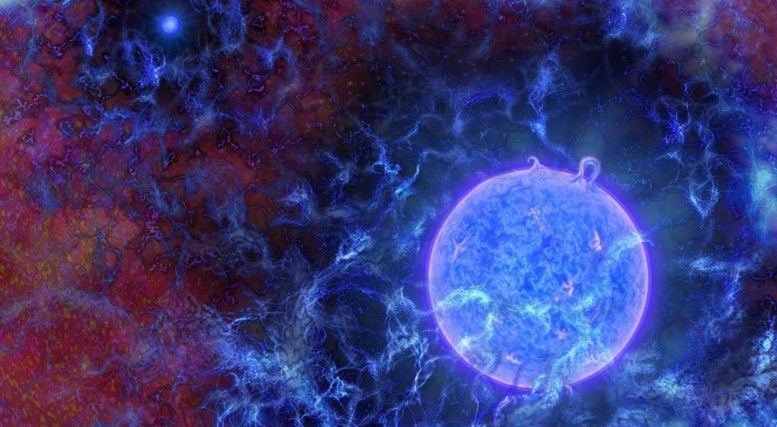
This artist’s rendering shows the universe’s first, massive, blue stars embedded in gaseous filaments, with the cosmic microwave background just visible at the edges. Using radio observations of the distant universe, NSF-funded researchers Judd Bowman of Arizona State University, Alan Rogers of MIT and their colleagues discovered the influence of such early stars on primordial gas. Although they can’t directly see the light from the massive stars, Bowman’s team was able to infer their presence from dimming of the cosmic microwave background (CMB), a result of the gaseous filaments absorbing the stars’ UV light. The CMB is dimmer than expected, indicating that the filaments may have been colder than expected, possibly from interactions with dark matter. Credit: N.R.Fuller, National Science Foundation
For the first time, astronomers have detected a signal from stars emerging in the early universe. Using a radio antenna not much larger than a refrigerator, the researchers discovered that ancient suns were active within 180 million years of the Big Bang.
The astronomers, from Arizona State University (ASU), the Massachusetts Institute of Technology (MIT) and the University of Colorado at Boulder, made the discovery with their Experiment to Detect the Global EoR (Epoch of Reionization) Signature (EDGES) project, funded by the National Science Foundation (NSF). They reported their findings in the March 1 issue of Nature.
NSF’s Peter Kurczynski explains how a tiny, refrigerator-sized antenna was able to make the first detection of the universe’s original stars. Credit: NSF
“Finding this minuscule signal has opened a new window on the early universe,” says astronomer Judd Bowman of the University of Arizona, the lead investigator on the project. “Telescopes cannot see far enough to directly image such ancient stars, but we’ve seen when they turned on in radio waves arriving from space.”
Models of the early universe predict such stars were massive, blue, and short-lived. Because telescopes cannot see them, though, astronomers have been hunting for indirect evidence, such as a tell-tale change in the background electromagnetic radiation that permeates the universe, called the cosmic microwave background (CMB).
A small dip in intensity, for example, should be apparent in CMB radio signals, but Earth’s crowded radio-wave environment has hampered astronomers’ search. Such dips occur at wavelengths between 65 megahertz (MHz) and 95 MHz, overlapping with some of the most widely used frequencies on the FM radio dial, as well as booming radio waves emanating naturally from the Milky Way galaxy.
“There is a great technical challenge to making this detection,” says Peter Kurczynski, the NSF program director who oversaw funding for EDGES. “Sources of noise can be 10,000 times brighter than the signal — it’s like being in the middle of a hurricane and trying to hear the flap of a hummingbird’s wing.”
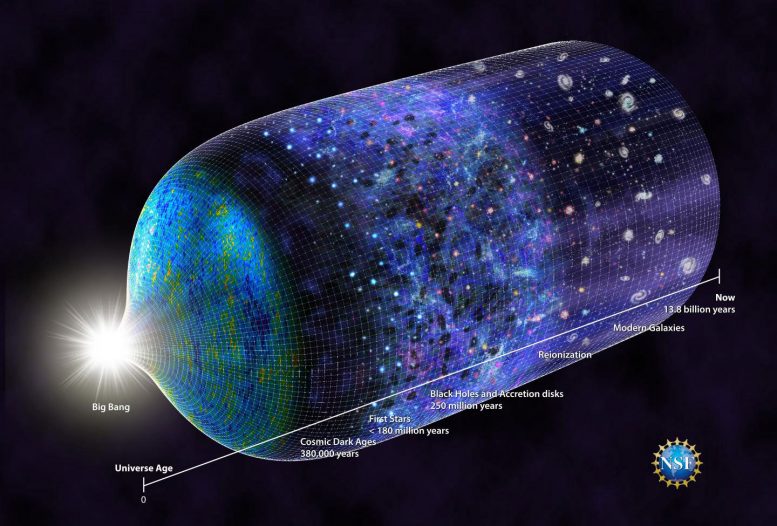
This updated timeline of the universe reflects the recent discovery that the first stars emerged by 180 million years after the Big Bang. The research behind this timeline was conducted by Judd Bowman of Arizona State University and his colleagues, with funding from the National Science Foundation. Credit: N.R.Fuller, National Science Foundation
Despite the obstacles, astronomers were confident that finding such a signal would be possible, thanks to previous research indicating that the first stars released tremendous amounts of ultraviolet (UV) light. That light interacted with free-floating hydrogen atoms, which began absorbing surrounding CMB photons.
“You start seeing the hydrogen gas in silhouette at particular radio frequencies,” says co-author Alan Rogers of MIT’s Haystack Observatory. “This is the first real signal that stars are starting to form, and starting to affect the medium around them.”
In their paper, the EDGES team reported seeing a clear signal in the radio wave data, detecting a fall in CMB intensity when that process began. As stellar fusion continued, its resulting UV light began to rip apart the free-floating hydrogen atoms, stripping away their electrons in a process called ionization.
When the early stars died, black holes, supernovae, and other objects they left behind continued the ionizing process and heated the remaining free hydrogen with X-rays, eventually extinguishing the signal. EDGES data reveal that milestone occurred roughly 250 million years after the Big Bang.
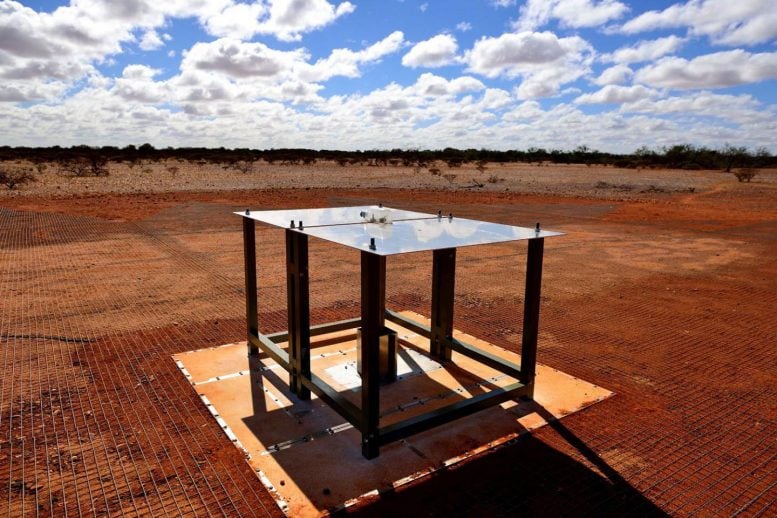
In each instrument, radio waves are collected by an antenna consisting of two rectangular metal panels mounted horizontally on fiberglass legs above a metal mesh. The EDGES detection required the radio quietness at the Murchison Radio-astronomy Observatory, as Australian national legislation limits the use of radio transmitters near the site. This discovery sets the stage for follow-up observations with other powerful low-frequency facilities, including HERA and the forthcoming SKA-low. Credit: CSIRO Australia
NSF investment
EDGES began more than a decade ago when Bowman and Rogers proposed building a unique antenna with a specialized receiver, a system that could detect clean signals across the target radio band. Through a series of NSF grants beginning in 2009, the researchers built the instrument, honed calibration methods, and developed statistical techniques for refining signal data.
Bowman, co-author Raul Monsalve from the University of Colorado at Boulder, and their collaborators added elements such as an automated system to measure antenna reflection to assess the system’s performance, control hut housing the electronics, and a component known as a ground plane.
With those tools in place, the researchers set up the EDGES antennae in the desert to eliminate as much radio noise as possible, selecting an isolated site at the Murchison Radio-astronomy Observatory in Australia, run by that nation’s Commonwealth Scientific and Industrial Research Organization (CSIRO).
Once the signal emerged in their data, the astronomers initiated a years-long process to check and recheck their findings against any known causes of instrumental errors and rule out potential sources of radio interference. In all, EDGES applied dozens of verification tests to ensure that the signal was truly from space.
While confirming the signal, the EDGES data also raise new questions, as the signal was twice as intense as models had predicted. The researchers suggest this means either the fog of hydrogen gas so soon after the Big Bang was colder than expected or that background radiation levels were significantly hotter than the photons of the CMB. The study authors suggest one possibility is that dark matter interactions may explain the effect.
“If that idea is confirmed,” Bowman says, “then we’ve learned something new and fundamental about the mysterious dark matter that makes up 85 percent of the matter in the universe. This would provide the first glimpse of physics beyond the standard model.”
Larger radio arrays are continuing the search and are expected to build beyond the initial EDGES findings to gain far greater insight into the earliest stars and galaxies.
“This discovery opens a new chapter in our understanding of how the world we see came into being,” Kurczynski says. “With an antenna not much different than an FM radio’s, and a great deal of care and ingenuity, the researchers saw something not yet detected by interferometers requiring hundreds of antennas, complex data processing, and hundreds of observing hours. Indirectly, they have seen farther than even the Hubble Space Telescope to find evidence of the earliest stars.”
Reference: “An absorption profile centred at 78 megahertz in the sky-averaged spectrum” by Judd D. Bowman, Alan E. E. Rogers, Raul A. Monsalve, Thomas J. Mozdzen and Nivedita Mahesh, 1 March 2018, Nature.
DOI: 10.1038/nature25792

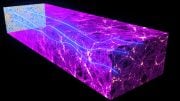


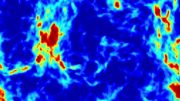

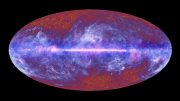

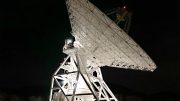
If light reaches us from a distance of say, 13 billion light years, the light must have started towards us 13 billion years ago. Correct? But 13 billion years ago our point in space was much closer to the source than we are now; in fact, only a matter of a few million lights years . . maybe. So how come it took 13 billon years to reach us after it was sent?
Inflation/Expansion.